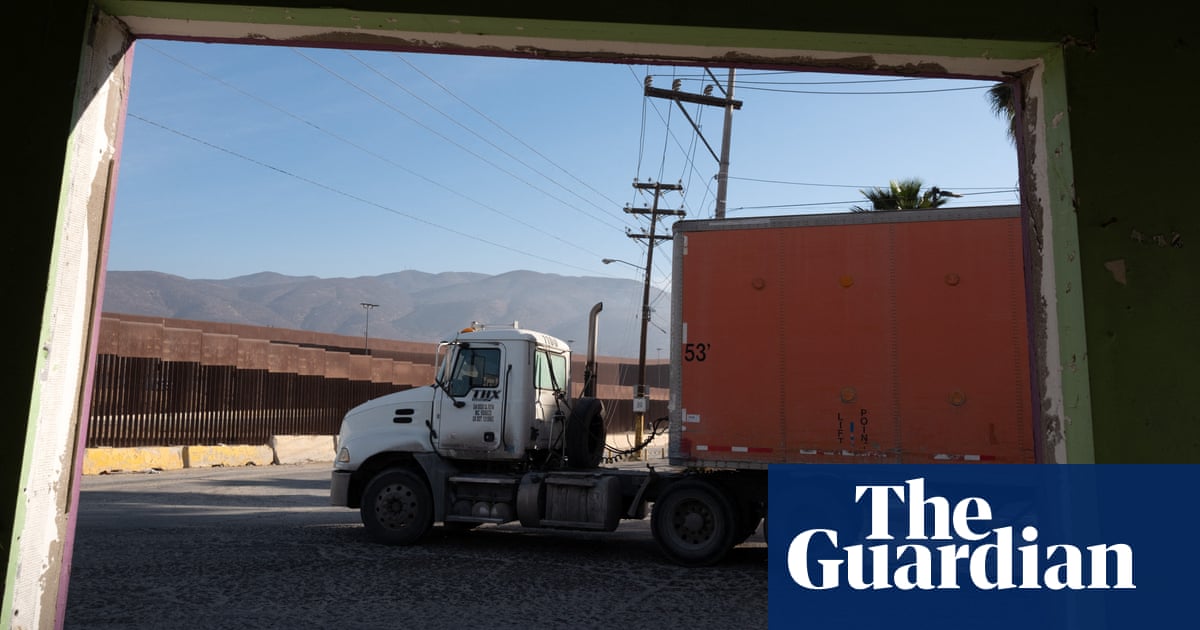Donald Trump on Saturday followed through with his promise to place tariffs on Canada, Mexico and China in retaliation over immigrants and illegal drugs that he says enter the US from those countries.
The White House said the tariffs would be implemented starting 1 February, but per the president’s executive order, titled Imposing Duties to Address the Flow of Illicit Drugs Across Our Northern Border, the tariffs will go into effect “on or after 12:01 a.m. eastern time on February 4, 2025”.
From Mar-a-Lago, Trump signed three executive orders placing tariffs of 25% on all goods from Canada and Mexico, and a 10% tariff on both Canadian oil exports and Chinese goods. All tariffs are being imposed under the authority of the International Emergency Economic Powers Act. If the countries affected retaliate, White House officials have indicated, tariff rates will increase.
Here’s what we know about Trump’s tariffs so far:
What are the tariffs Trump issued?
The White House said it would place a 25% tariff on Canada and Mexico and a 10% tariff on China. How broad the tariffs will be is still unclear. Trump could make exemptions for certain sectors, such as oil and gas, or limit the tariffs to select groups.
Over the past week, as the deadline approached, some of Trump advisers appeared uncertain as to whether or when tariffs would be imposed. “I can’t tell you when,” Peter Navarro, Trump’s senior trade and manufacturing adviser, told CNBC on Friday.
With even Trump advisers struggling to keep up with his next moves, anything could happen before the imposition of the tariffs.
What is a tariff and why does Trump want to use it against certain countries?
A tariff is a tax levied on foreign goods imported into a country. The US is currently the largest goods importer in the world – in 2022, the value of imported goods in the US totalled $3.2tn.
Before entering office, Trump threatened tariffs on the US’s three biggest trading partners: China, Mexico and Canada. Specifically, he said he wanted to see a 25% tariff on Mexico and Canada and a 10% tariff on China, until the countries deal with immigrants and illegal drugs coming into the US.
Trump sees tariffs as a powerful bargaining chip – but it comes with a high price.
Trump frames tariffs as a policy that can apply pressure on US manufacturers and importers to produce goods domestically.
“All you have to do is build your plant in the United States, and you don’t have any tariffs,” Trump has said. But the global economy has been intertwined for decades. US farmers, for example, would not be able to produce the number of avocados Mexico produces for many years.
What this means is that importers will probably push the cost of tariffs on to consumers, causing prices to rise.
How will US consumers be affected by the tariffs?
A 25% tariff on all imports from Mexico and Canada will make consumer prices go up. Canada is a major exporter of crude oil, while Mexico exports many fresh fruits and vegetables. Mexico is also the largest auto parts exporter to the US. China is a major exporter of chips used in electronics like phones and laptops.
Altogether, the US imported $1.2tn worth of goods from Canada, Mexico and China combined in 2023.
It’s not just the imports that consumers buy directly. When tariffs push up the price of imports, that includes imported materials used to make other products domestically in the US. Higher prices for materials will eventually make their way to consumers.
The Tax Foundation, a bipartisan thinktank, estimates that a 25% tariff on Mexico and Canada and a 10% tariff on China, as a tax, would increase overall taxes by $1.2tn. Trump has celebrated the idea that the US government would receive more revenue through tariffs, but it would ultimately be US consumers footing the bill.
Americans have been bracing for the impact tariffs will have on prices. In a November Harris/Guardian poll, nearly two-thirds of Americans said they expected prices to go up if Trump implements broad tariffs.
Which federal laws give Trump the power to enact tariffs?
US federal law gives the president broad powers to enact tariffs without congressional approval.
Trump has the power to declare a national economic emergency to enact his tariffs. This would invoke the International Emergency Economic Powers Act (IEEPA), which gives the president the power to manage imports during a national emergency.
Trump can also apply tariffs under section 232 of the Trade Expansion Act, which gives the president power to impose tariffs on certain industries. This is what Trump used in 2018, when he hit Canada, Mexico and the European Union with tariffs on aluminum and steel.
How have other countries responded to Trump?
Leaders from Canada and Mexico suggested they would work with the Trump administration to address his concerns about immigration and illegal drugs. Canada said that it was in talks with American officials over the creation of a “North American fentanyl strike force”. Mexico, meanwhile, said it would create a similar group for immigration.
If this cooperation is not enough for Trump, Canada and Mexico will probably implement their own tariffs against US imports in retaliation, which would hurt American business. The Canadian prime minister, Justin Trudeau, said on Friday that his country would bring “forceful but reasonable” tariffs against the US.
After Trump placed tariffs on Mexican steel and aluminum in 2018, Mexico responded with tariffs on pork, cheese and other goods, looking to hurt US manufacturers in retaliation. The US and Mexico eventually reached an agreement in 2019 to lift their tariffs.
Have a question about Trump tariffs? Wondering how they affect inflation, prices or the economy? We’re here to help. Email callum.jones@theguardian.com and we may answer your question in a future story
Article by:Source: Lauren Aratani in New York















